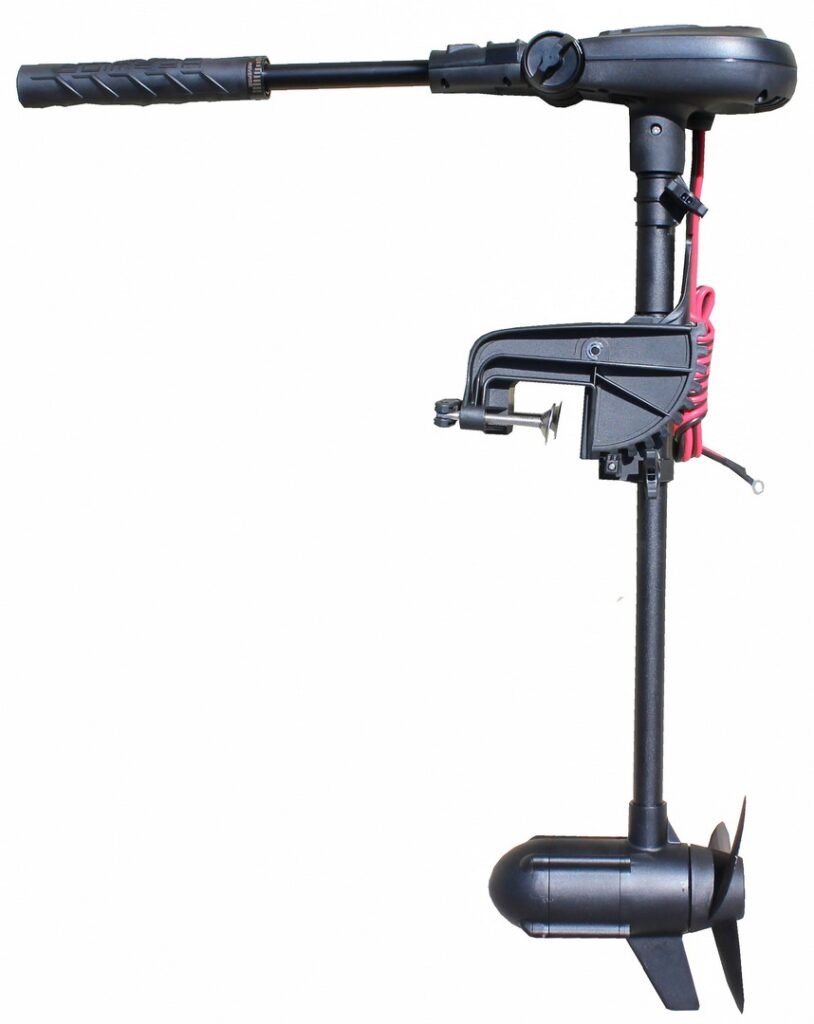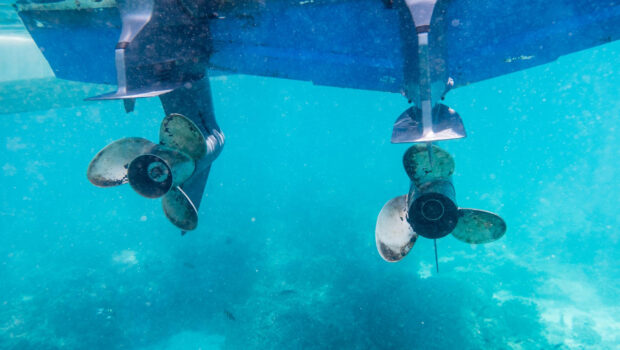How to Pick the Most Suitable Electric Trolling Motor
It’s critical to have the correct size of an electric trolling motor for your boat. The thrust or motor power and shaft length are the two most important factors in trolling motor size.
Both of these must be properly matched to your boat for the best results, and doing it incorrectly might result in severe problems on the water. This post will help you choose the right trolling motor size, torque, and shaft length for your boat.
What Size of Electric Trolling Motor do I Need?
As a rule of thumb, a trolling motor should give roughly 2 pounds of thrust for every 100 pounds of fully-loaded boat weight. In this instance, an additional 10 to 20% thrust is required for the motor to function properly. You’ll need extra electricity if you plan to meet high winds or currents.
However, keep in mind that boats with a deep draught resist water currents more than boats with a short draught, necessitating a larger brushless electirc trolling motor. Furthermore, boats with a high deck height above water provide a lot of surface area for the wind to blow against, necessitating more power to deal with severe winds.
The quantity of push you require for your situation may be greater than you anticipated. When in doubt, opt for an overpowered electric trolling motor, which is easier to correct than an underpowered one.
In general, it’s preferable to have too much push than not enough, as this allows you more flexibility to deal with unforeseen scenarios. However, keep in mind that the table above is an estimate for an average boat, and your boat type may require various amounts of thrust in addition to wind and current.

What Size of Electric Trolling Motor Does a Canoe Require?
Because canoes rarely weigh more than 500 pounds when fully laden, a 30-pound thrust trolling motor will suffice in most settings with little current. In contrast, a 40 to 55-pound thrust is preferable if you expect to meet a greater current (on a river, for example) or wind.
What Size of Electric Trolling Motor Does a Kayak Require?
A 30-pound thrust trolling motor is powerful enough to propel a kayak that rarely weighs 300 to 400 pounds fully loaded. Ocean kayaking is the only exception, as you may anticipate meeting a strong current. A trolling motor with a push of 40 to 55 pounds will suffice in that situation.
How to Measure the Shaft Length of an Electric Trolling Motor
Selecting the optimum shaft length for your trolling motor is critical to guarantee that the propeller is immersed deep enough in the water to perform effectively. However, different boats have varied deck heights above water. There are also different mounting options for a trolling motor, the most frequent of which are bow mount and transom mount.
Your trolling motor prop should be 15 to 20 inches below the water level as a general rule. So, to calculate the optimal shaft length for your trolling motor, measure the distance between the deck and the water and add 15 to 20 inches.
You’ll need to acquire the proper battery for your trolling motor once you’ve chosen the right size for your boat. Depending on the thrust rating, you’ll need a 12v, 24v, or 35v battery system for the trolling motor.
The world of trolling motors is expanding, and new features appear regularly. It’s essential to consider some trolling motor features to get the best out of your machine. Here are a few that you should look into:
Integrated-in Battery Gauge
Some trolling motor models include a battery gauge built into the housing or head. This gauge lets an angler quickly and effortlessly determine how much power is left in the battery. This will make it a no-brainer to predict the remaining fishing time or when to clamp on the charger.
Digital Displays
High-end models now come standard with digital displays that include speed and depth readouts. Although these motors are expensive, the technology guarantees that you will catch more fish.
Self-Directional Motors
This is a unique feature in that it enables completely hands-free operation. It will automatically follow shorelines or depth contours using GPS data. Even when the wind is howling, it will steer you on a straight route.
Here are some more things to consider before making your ultimate choice:
- A composite or stainless steel shaft will withstand shock and misuse better than a weaker metal shaft.
- Ensure the prop is weedless and that new blades for your model are available.
- Make sure the mount is sturdy and durable. The fewer plastic components, the better.
- Make sure the cable is long enough for the size of your boat if you plan on using the foot-control pedal from anywhere on the boat.
Electric Trolling Motors Gives a Different Fishing Experience
For the adventurous angler, perfecting boat control, inaccessible fishing regions, and maintaining a stealthy approach will increase enjoyment and more fish. Shop around, try on several styles, and pay attention to the details – you’ll have a great time on the lake.
Maintenance Tips for Your Electric Trolling Motor
It will operate more smoothly if you keep your motor clean of dirt and weeds. When cleaning your motor, make sure it’s securely fastened to your boat or, if it’s off the boat, to a workbench. Tighten any loose screws and nuts on a bow-mount motor at this time.
Start by washing the outside of the motor with a mild soap and water solution. This helps get rid of any dirt accumulated around the moving parts of the unit. Once the unit is dry, look for evidence of wear or damage on the shaft.
The propeller depth is controlled by sliding the motor shaft up and down. The shaft can become stuck over time. Apply a light coat of protectant with a rag to the composite shaft to restore smoothness.
Hopefully, we have been able to answer the question what size of electric trolling motor do I need? We are wholesale manufacturers of high functioning and efficient electric trolling motors and deliver worldwide. Visit our website for more information.
Cover Image by Freepik












